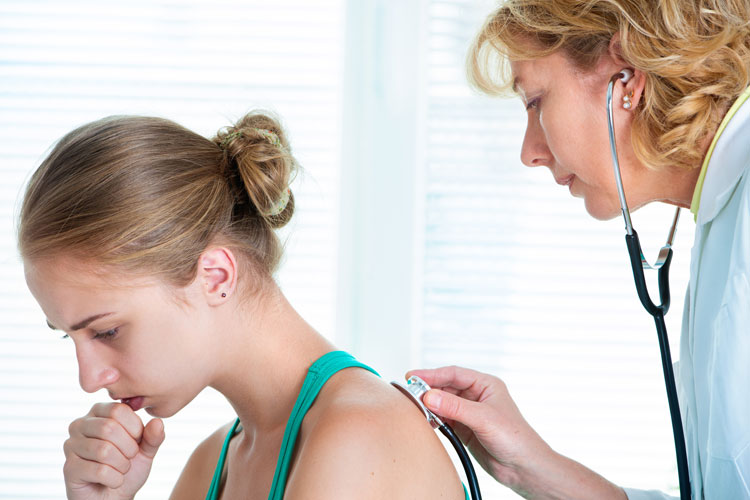In the article, we consider the instructions for the "Pseudomonas bacteriophage."
The drug is used for the treatment and prevention of purulent and inflammatory, and, in addition, enteric diseases that are caused by Pseudomonas aeruginosa or dysbiosis.
Release form
"Pseudomonas bacteriophage" is released in liquid form for local use and oral administration. The product is released in bottles of 50 and 100 milliliters. This drug is a phagolysate filtrate that is active against Pseudomonas aeruginosa.
Indications for use
According to the instructions, "Pseudomonas bacteriophage" is used to treat patients who suffer from diseases of different localization caused by Pseudomonas aeruginosa. In particular, this drug is used in the presence of diseases of the ears, nose and respiratory canals, including the presence of otitis media, sinusitis, tonsillitis, tracheitis, pharyngitis, laryngitis, tracheitis, pneumonia, bronchitis and pleurisy.
The list of indications in the "Pseudomonas bacteriophage" is extensive.
This tool is used in surgical practice if patients have burns, suppuration, phlegmon, abscess, boils, hydradenia, carbuncles and bursitis. It is used in the treatment of urogenital infections, including cystitis, pyelonephritis, urethritis, colpitis, salpingoophoritis and endometritis.
What else does the instruction tell us? "Pseudomonas bacteriophage" is prescribed to patients who suffer from cholecystitis, gastroenteritis, intestinal microflora, purulent and inflammatory, and, in addition, septic diseases. In addition, this tool is used to treat pyoderma, conjunctivitis and ulcerative lesions of the cornea. "Pseudomonas bacteriophage" is also applicable for the prevention of infection of a postoperative wound.
Mode of application
As the instructions indicate, "Pseudomonas bacteriophage" is intended for local, and, in addition, for oral and rectal use. Shake it immediately before using this solution. In the event that there is a change in the transparency of the product or any visible precipitate, then the product is prohibited.
The solution contains a nutrient medium. In order to prevent infection of the drug with microorganisms, you need to thoroughly wash your hands before using it, treating the cap with an antiseptic solution. In addition, contact with various objects should be avoided. Do not leave this bottle open. The set of necessary doses of the drug should be performed with a sterile syringe. As a rule, patients are given orally three times a day:

- The recommended single dose of Pseudomonas bacteriophage for children under six months is 5 milliliters orally and 10 milliliters in an enema.
- A single dose for children up to twelve months is 10 milliliters orally and 20 milliliters in an enema.
- A single dosage for children from one year to three years is 15 milliliters orally and 20 milliliters in an enema.
- The dose of "Bacteriophage" at the age of three to eight years is 20 milliliters orally and 40 milliliters in an enema.
- The dose for children over eight years of age and for adults is 30 milliliters orally and 50 milliliters in an enema.
Drug Reviews
Reviews about the "Pseudomonas bacteriophage" on the Internet are positive. For example, people often in their comments point out that this drug effectively copes with the treatment of purulent and inflammatory diseases that are caused by Pseudomonas aeruginosa or dysbiosis. No side effects have been reported. Thus, it is noted that this drug is easily tolerated by children and adult patients.
Use of the drug in children under the age of six months, in premature infants, including
If the newborn has enterocolitis, sepsis, high enemas are performed in 5-10 ml of the drug three times a day. Oral use of the medicine can also be done by mixing with breast milk. Therapy is continued for up to 15 days.
To prevent enterocolitis, sepsis during intrauterine infection or the risk of hospital infection in newborns, the medication can be used 2 times a day in the form of enemas for a week.
How is pyoderma, omphalitis, septic wounds treated? In these cases, applications are made with a soaked gauze napkin, which is applied to the wound surface 2 times a day.
Pseudomonas aeruginosa
This is such a mobile bacterium, which is the causative agent of a huge number of all kinds of infectious diseases. The danger of such a stick is that it is very resistant to the vast majority of all kinds of antimicrobial drugs. This bacterium got its name because it stains the nutrient medium in which it grows in a blue tint.
Let us consider in more detail the symptoms and treatment of Pseudomonas aeruginosa.
Symptoms of the disease
Consider the features of the symptoms of diseases caused by Pseudomonas aeruginosa:
- With endocarditis, people develop a fever along with a heart murmur and positive blood culture on Pseudomonas aeruginosa. Skin symptoms appear as Roth spots, Osler nodules, and hemorrhages. The spleen increases.
- With pneumonia in people under the influence of this stick, a cough occurs along with wheezing, fever, pallor and cyanosis, hypoxia, and sometimes shock.
- If the digestive system is affected by this wand, fever occurs along with signs of dehydration, indigestion and peritonitis.
- When skin with soft tissues is affected, hemorrhage occurs along with areas of necrosis that are surrounded by erythema, subcutaneous nodules, abscess, cellulitis and fasciitis.
Treatment
Symptoms and treatment of Pseudomonas aeruginosa are interrelated.
The following are the schemes of prescribed drugs for various manifestations of Pseudomonas aeruginosa:

- With endocarditis, patients are prescribed high doses of aminoglycosides, and, in addition, penicillins or cephalosporins with a wide range of effects. Treatment lasts up to six weeks.
- With pneumonia, treatment begins with two antibiotics, and in the course of improving the patient's well-being, one of the antibiotics is canceled.
- With bacteremia, due to the danger and severity of the pathological process, antibiotic therapy is prescribed before the results of blood culture come. Patients get “Aminoglycoside” and “Penicillin” or cephalosporins with a wide spectrum of effects, sometimes one of the medications changes to “Ciprofloxacin” or to the drug “Rifampicin”.
- With meningitis, the drug of choice is Ceftazidime, to which Aminoglycoside is connected. Antibiotic therapy lasts at least two weeks.
- In case of ear damage, a combination of antibiotics and corticosteroids is usually prescribed (for example, Metipred).
Thus, with Pseudomonas aeruginosa, treatment is carried out depending on the area of damage to the body.